- News
- Reviews
- Bikes
- Accessories
- Accessories - misc
- Computer mounts
- Bags
- Bar ends
- Bike bags & cases
- Bottle cages
- Bottles
- Cameras
- Car racks
- Child seats
- Computers
- Glasses
- GPS units
- Helmets
- Lights - front
- Lights - rear
- Lights - sets
- Locks
- Mirrors
- Mudguards
- Racks
- Pumps & CO2 inflators
- Puncture kits
- Reflectives
- Smart watches
- Stands and racks
- Trailers
- Clothing
- Components
- Bar tape & grips
- Bottom brackets
- Brake & gear cables
- Brake & STI levers
- Brake pads & spares
- Brakes
- Cassettes & freewheels
- Chains
- Chainsets & chainrings
- Derailleurs - front
- Derailleurs - rear
- Forks
- Gear levers & shifters
- Groupsets
- Handlebars & extensions
- Headsets
- Hubs
- Inner tubes
- Pedals
- Quick releases & skewers
- Saddles
- Seatposts
- Stems
- Wheels
- Tyres
- Health, fitness and nutrition
- Tools and workshop
- Miscellaneous
- Buyers Guides
- Features
- Forum
- Recommends
- Podcast
feature
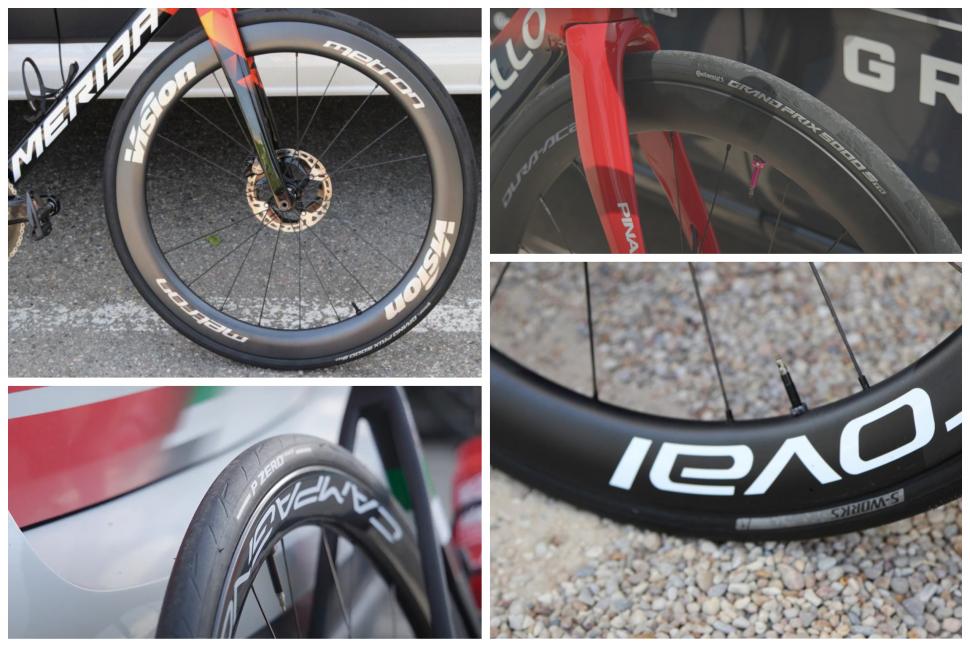 2022 Tubeless tour de france hero comp
2022 Tubeless tour de france hero compAre we witnessing the death of the tubular tyre? Why tubeless now rules the Tour de France peloton
Does 2022 mark the year that tubeless tyres have overtaken tubulars? We've done the research and more teams than ever have made the transition. Here we take a look at the reasons why, find out just how many teams are clinging on to the past, and check out what equipment the teams are choosing to run.
Last year we saw a greater mix of tyre types in the pro peloton than ever before. Well, this year, there's a lot less mix and a lot more tubeless, but why is this? Well, a large part of the reason is down to Roval and Shimano. Between them, they supply wheels to eight of the teams competing in this year's Tour de France (TdF) and both brands have new tubeless wheels in their line-ups.
> Roval revives tubeless for Rapide and Alpinist CLX II
QuickStep Alpha Vinyl, Total Energies and Bora-Hansgrohe all have access to Roval's latest generation of wheels: the Rapide CLX II for flat stages, and the Alpinist CLX II for the mountains. Both sets of wheels look very similar to the previous generation but have gained a few grams to add tubeless compatibility.
Jumbo Visma is one of the teams using Shimano wheels and 2022 is the first season that we've spotted them using tubeless at the TdF. As previous advocates of tubular tyres, it's hard to overlook the issues that they had at Paris-Roubaix when using tubular wheels and hence for Stage 5 the team opted for tubeless setups... not that it went ideally for them either.
> Two carbon Dura-Ace wheels fold in half at Paris Roubaix
On other stages though, it appears that Jumbo Visma has stuck with tubular wheels and tyres. Having a mix of tubeless and tubular wheels does seem a popular choice for teams this year. We've seen similar from Israel Premier Tech and AG2R Citroen. So why are we seeing this non-committal approach? Quite simply, there are pros and cons to both systems:
Pros of tubeless
- Can seal punctures
- No pinch flats (benefit over clinchers)
- Lower rolling resistance
- Lower pressures are comfy
Cons of tubeless
- Setup can sometimes be a pain
- Sealant is less effective at high pressures
- They can be heavier than tubular setups
- Harder to ride than a tubular when fully deflated
> Buyer's guide: Tubeless tyres
The benefits of tubeless tyres have been known for some time. They can have their drawbacks, but those are mainly dealt with before your ride when you have a team of mechanics preparing your bike for you. Also glueing on tubular tyres isn't exactly the quickest job in the world.
The main benefits for pro riders are that they're faster – which is why we saw them used quite so much during the opening time trial – and that punctures forcing riders to the side of the road are less likely, hence we saw so many during the Paris-Roubaix-esque Stage 5. So the quantity of tubeless tyres that we see is going to vary from stage to stage, for example, in the high mountains it's reasonable to assume that more riders will use tubular setups as they're still the lightest option available.
The following is by no means written in stone but from analysing team bikes we can get a general idea of where each team stands on using tubeless...
In the tubeless corner: EF Education Easypost, Bahrain Victorious, Ineos, Quickstep Alpha Vinyl, Total Energies, Bora-Hansgrohe, UAE Emirates, Lotto Soudal, B&B Hotels - KTM, Arkea Samsic
On the fence: Jumbo Visma, Israel Premiertech, Bikeexchange Jayco, AG2R Citroen, DSM, Intermarché - Wanty - Gobert Matériaux, Movistar (mostly tubular), Cofidis, Trek Segrafredo, Alpecin-Deceuninck
In the tubular corner: Astana-Qazaqstan, Groupama FDJ
So why has it taken so long?
Tubeless is by no means a new invention, it's been used since the turn of the century on mountain bikes after all. It has, however, up until now struggled to gain traction in the road sector and in particular the TdF. The world of pro cycling is notoriously resistant to change, not just in their bike tech, but in their training, diet, recovery and essentially anything involved with pedalling a bicycle.
Back when 25mm tyres were becoming a thing, one French team asked its tyre sponsor to label all the new 25mm tyres as 23mm. The mechanics knew that the wider tyres were faster, but also knew that the riders wouldn’t like the change. The pros trust what they know, so you’ll just have to forgive them for resistance to change.
Tubeless tyres: the hidden pitfalls that you try to avoid
Many pros still like tubular tyres because of the safety they offer in the event of a puncture. As the tyre is glued to the rim, it should stay there when deflated, allowing the rider to continue rolling along at the back of the peloton until their team car comes up to change the wheel. This gives the rider a shorter chase back to the bunch.
Arguably, tyre inserts such as the Vittoria Air Liner provide tubeless tyres with a similar benefit as they allow you to ride on if you lose pressure in your tyres, doing a great job at keeping the tyres on the rim when flat, although fitting these does mitigate the weight-saving gain of tubeless systems.
> Review: Vittoria Air-Liner Road Tubeless Insert Kit
We've seen tyre liners pioneered by EF Education-Easypost and Alexander Kristoff is rumoured to have been using them at the classics races for years. A source within Team DSM even told us that they found it easier to ride on a deflated tubeless tyre fitted with a liner than on a fully deflated tubular tyre.
In the peloton, it's quite common for the domestiques to be using tubeless tyres and liners so that they're less likely to puncture and if they do can continue riding and hopefully helping whilst waiting for a spare wheel.
Team leaders, on the other hand, get more free reign and are more likely to be using tubular wheels and tyres because of the small weight advantage and the fact that they rarely have to wait as long for a spare wheel or bike as the team car is closer.
In an ideal world, sponsors would prefer to see riders win on models that the public is likely to buy, and that means wheels that take clinchers and tubeless tyres. The market for tubular wheel/tyre systems is small at best.
So can we trust the opening week of the Tour de France?
Never is the world’s cycling and general media more focused on bike racing than during the opening stages of the Tour de France. As a result, the brands that pay the riders to use their latest and greatest kit want it used. Preferably, their star rider will use it to win, and then sing its praises to the waiting media.
Check out the bikes that have won each stage of the 2022 Tour de France
The first week has brought us plenty of tubeless stage victories, for example, Fabio Jakobsen on Stage 2 used Roval wheels and Specialized S-Works Turbo RapidAir tyres, Wout Van Aert appeared to be on a set of tubeless GP5000TR tyres and Shimano Dura-Ace C60 wheels for his Stage 4 victory.
Stages 6 and 7 went to Tadej Pogacar on a set of Campagnolo Bora Ultra WTO wheels and tubeless Pirelli Race TLR tyres before Wout nicked a win back for tubulars on Stage 8.
Stages 9 and 10 also went to tubeless with Bob Jungels of AG2R Citroen and Magnus Cort Nielsen of EF Education-Easypost respectively.
> Lighter, wider, more aero: which wheels work best for your type of riding?
Of course, we're not suggesting these riders won because of the tyres they chose; we're just using stage wins as a snapshot of what's going on in the peloton.
How will the rest of the Tour shape up for clincher, tubeless and tubular systems? We can probably expect the percentage of tubular victories to rise as the climbers come to the fore... Or Pogacar will keep winning anything with a hill in it on tubeless.
Tubeless seemed to be getting a foothold in the pro peloton last year, but it’s this year that the victories have started rolling in especially on the flatter stages. The next couple of weeks are certainly going to be interesting.
Are you a fan of using tubeless tyres on the road? Let us know in the comments section below?
Jamie has been riding bikes since a tender age but really caught the bug for racing and reviewing whilst studying towards a master's in Mechanical engineering at Swansea University. Having graduated, he decided he really quite liked working with bikes and is now a full-time addition to the road.cc team. When not writing about tech news or working on the Youtube channel, you can still find him racing local crits trying to cling on to his cat 2 licence...and missing every break going...
Latest Comments
- David9694 0 sec ago
Yep, it's official - reds under the, er, bonnet...
- wtjs 7 min 6 sec ago
Stephen Aylen, a non-aligned councillor for Southend-on-Sea Borough Council who questioned why the "ugly and out of place" structures had been...
- Rendel Harris 34 min 22 sec ago
Indeed, I was drawing from personal experience – I don't use it that often but it's such a nice bit of infrastructure that I sometimes go out of my...
- paulgardener@gmail.com 38 min 27 sec ago
Except socialism doesn't work like that in real life. It's the capitals countries that try to look after those in need, and the average person's...
- Patrick9-32 53 min 27 sec ago
2020/2021: Bike companies place large orders to attempt to fill pandemic orders which go unfulfilled due to massive lead times. Leaving many bike...
- KDee 1 hour 35 min ago
It's the mass that's the issue. Two people on a petrol powered scooter can really mess up a cyclist. Also the fact so many of the petrol scooters...
- james-o 1 hour 45 min ago
"if we’ve got to fly there we’re not going" *applause from over here*
- KDee 1 hour 46 min ago
"Strumpjumper"...sounds like a euphemism for something else 🤔
- andystow 2 hours 2 min ago
The new RH tubes claim to solve that issue, but price and availability is a problem. I tried to get some to try out, but they went out of stock on...
- Secret_squirrel 5 hours 57 min ago
Those calipers arent the prettiest. Makes them look like Post-mount.


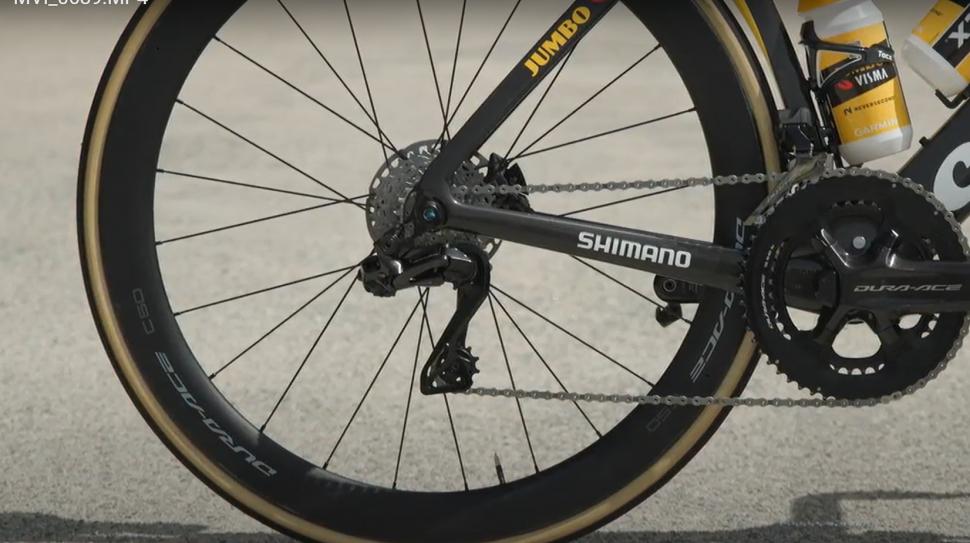
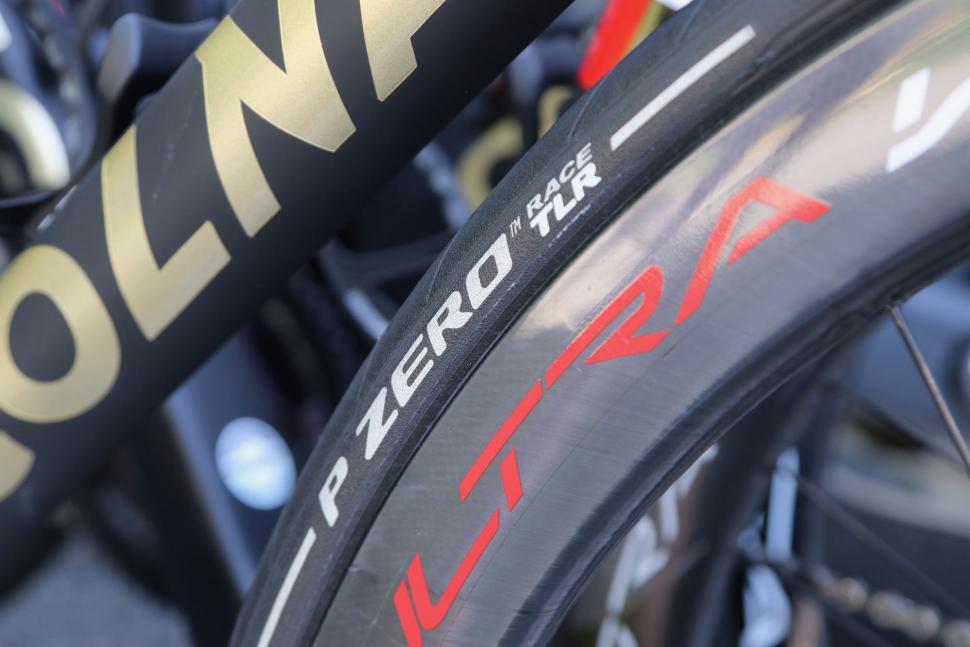

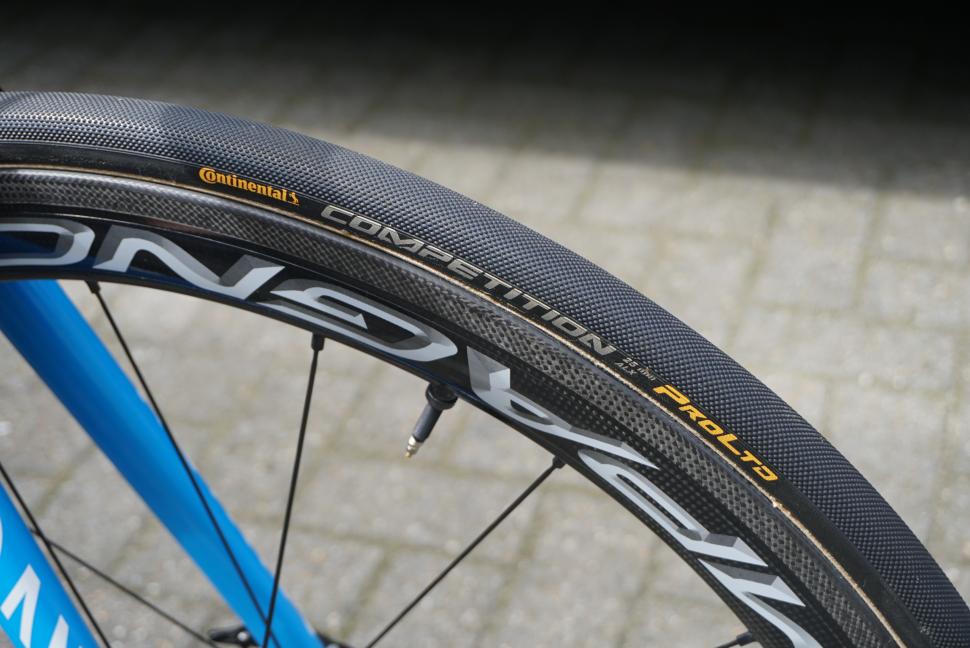
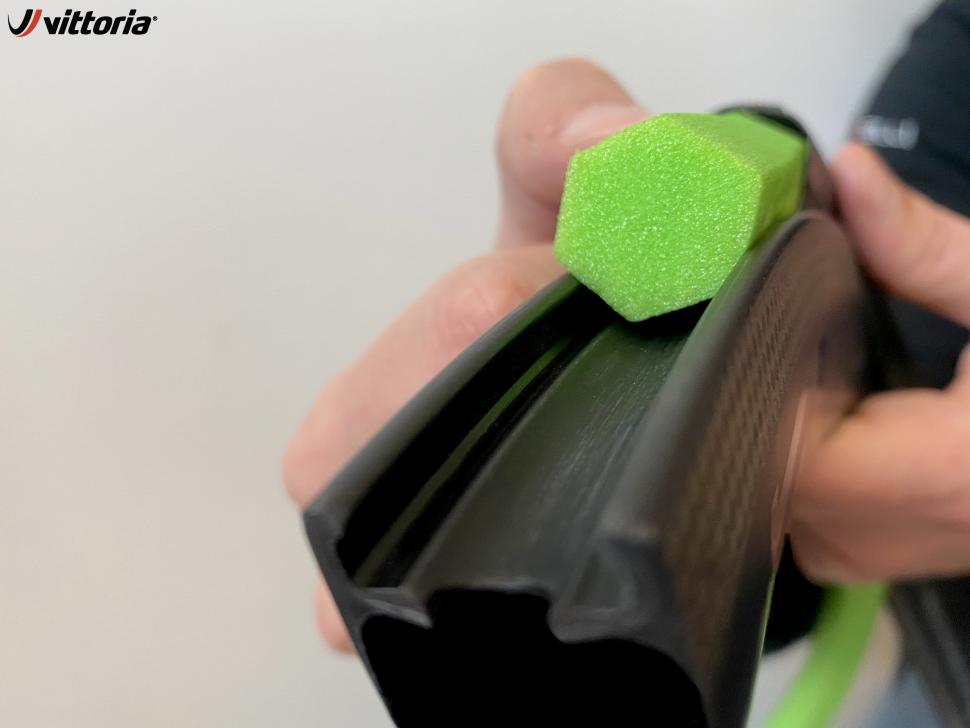

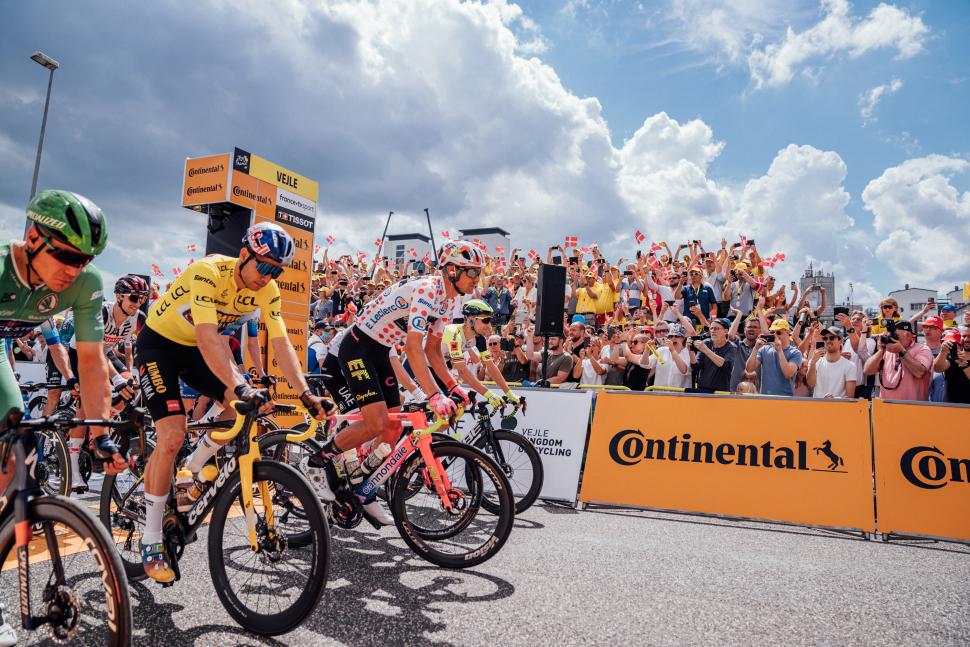


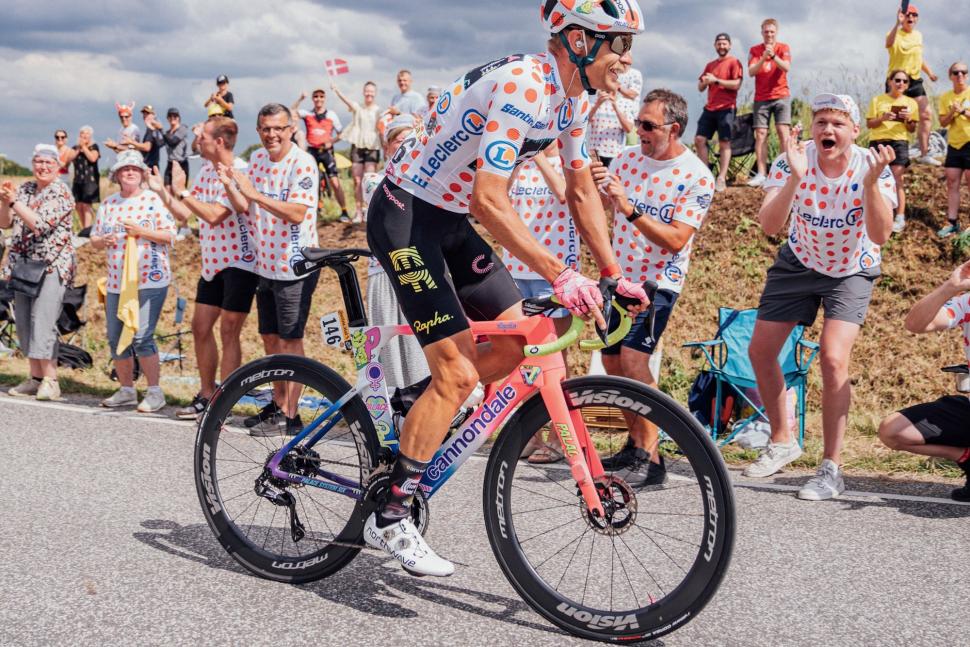

Add new comment
4 comments
I'm guessing that the use of tubeless could somewhat negate the nastiness of the tack-attack.
Tubeless certainly helps to stop the tyres deflating when punctured by a tack, but you still have the issue of a sudden lack of grip when cornering or braking. The size of a typical thumb tack is not far of the size of the contact patch, so you can suddenly find yourself with almost no rubber in contact with the road. I speak from personal experience in that regard!
I'd love to see an article on wattage losses of tyres on hooked vs hookless rims. Im still struggling to get my head around whether compression and decompression of the tyre at lower 'hookless' pressures results in wasted watts?
https://www.bicyclerollingresistance.com/specials/grand-prix-5000-s-tr-h...
They tested across hooked and hookless at the maximum 73psi for hookless and the differences were minimal. Well within the tolerances of such tests.
Also, it's more than likely that a tyre size of 28mm upwards will be used on a hookless rim so 73psi in a 28mm tyre on a wide hookless rim, which creates a large chamber, should be more than enough. 25mm tyre on a narrow hookless rim (if they exist) might be too soft.